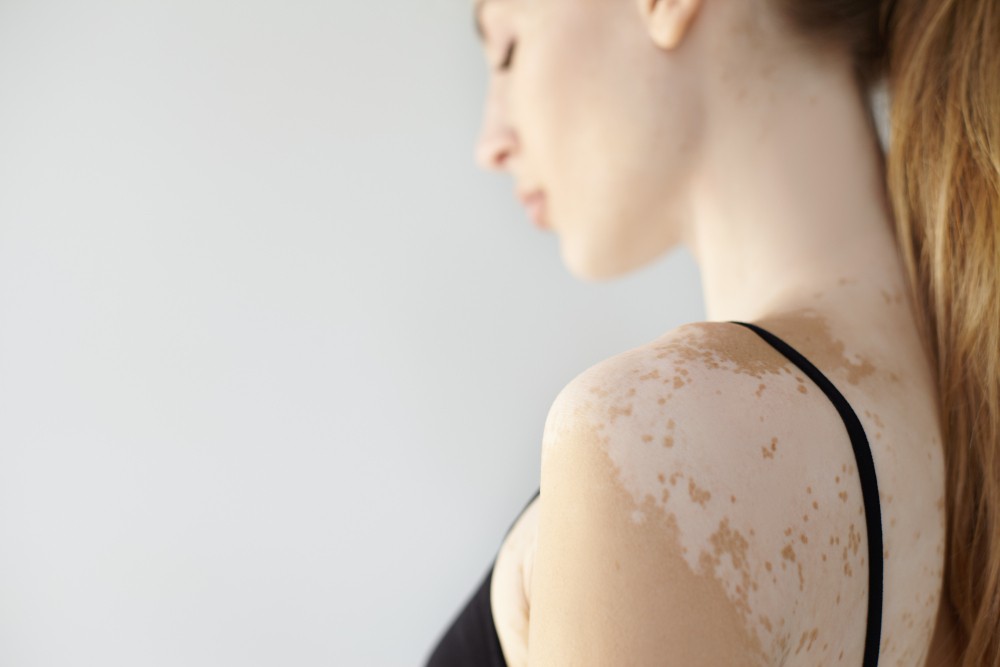Seborrheic dermatitis is a type of dermatitis characterized by inflammation of the skin, leading to symptoms such as redness, itching, swelling, and rash. Learn about the causes and risk factors of seborrheic dermatitis.
What is seborrheic dermatitis?
Seborrheic dermatitis is a chronic skin condition characterized by redness, itching, and flaking in areas of the skin that have oil glands, such as the scalp, face, and other parts of the body.
On the scalp, seborrheic dermatitis appears as a buildup of white or yellowish flakes accompanied by itching. Most people recognize it as dandruff.
On the face, seborrheic dermatitis is marked by redness, flaky skin, and itching in areas such as the eyebrows, sides of the nose, and behind the ears. This condition can also occur in other oily areas like the chest, upper back, and skin folds.
Causes of seborrheic dermatitis
The exact cause of seborrheic dermatitis is not well understood. However, it is mainly triggered by Malassezia yeast infection, genetic factors, and environmental factors.
Malassezia yeast
Seborrheic dermatitis is often associated with the growth of Malassezia yeast, which is normally found on the skin. This yeast can overgrow in people with oilier skin.
Genetic factors
Genetics can influence your susceptibility to seborrheic dermatitis and other skin conditions. If you have a family history of seborrheic dermatitis or other skin disorders, you are more likely to develop this condition.
Environmental factors
Cold or dry weather can irritate the skin, worsening seborrheic dermatitis symptoms. Stress is also frequently linked to flare-ups of seborrheic dermatitis, as it can affect the immune system and skin health.
Factors increasing the risk of seborrheic dermatitis
Several factors can increase the risk of developing seborrheic dermatitis, including:
- Neurological conditions, such as Parkinson's disease and epilepsy
- HIV infection
- Brain or spinal cord injury
- Lymphoma or cancer of the lymph nodes
- Stress and mood disorders like depression
- Individuals with Down syndrome tend to have more sensitive skin and are more prone to seborrheic dermatitis
- Anorexia nervosa, which can affect skin health and increase the risk of seborrheic dermatitis
- Excessive alcohol consumption can disrupt the skin's oil balance and immune system
- Skin conditions like rosacea or psoriasis
- Recovery from a stroke or heart attack, which can increase susceptibility to seborrheic dermatitis
- Organ transplantation, which can lower the immune system due to immunosuppressive medications
Seborrheic dermatitis cannot be cured, but antifungal shampoos, topical ointments, and moisturizers can help relieve symptoms. You should also limit your exposure to triggers and seek medical attention if the symptoms interfere with your daily activities.
You can also make use of the consultation features that are available in the Ai Care application by downloading the Ai Care application from the App Store or Play Store.
Looking for more information about other diseases? Click here!
- Sean Edbert Lim, MBBS
American Academy of Dermatology Association (2022). Seborrheic Dermatitis: Causes. Available from: https://www.aad.org/public/diseases/a-z/seborrheic-dermatitis-causes
WebMD (2023). Seborrheic Dermatitis. Available from: https://www.webmd.com/skin-problems-and-treatments/seborrheic-dermatitis-medref
Cleveland Clinic (2020). Seborrheic Dermatitis. Available from: https://my.clevelandclinic.org/health/diseases/14403-seborrheic-dermatitis
Cleveland Clinic (2020). Dermatitis. Available from: https://my.clevelandclinic.org/health/diseases/4089-dermatitis
Cleveland Clinic (2022). Malassezia (Pityrosporum) Folliculitis. Available from: https://my.clevelandclinic.org/health/diseases/22833-pityrosporum-folliculitis
Jenna Fletcher (2023). How to stay healthy with a weak immune system. Available from: https://www.medicalnewstoday.com/articles/324930











